The flag of Saint Lucia is a compelling tapestry of colors and geometric shapes, beautifully embodying the unique identity of this Caribbean nation.
Acting as a visual tale, the flag integrates the country’s stunning natural landscapes, diverse cultural influences, and progressive vision into a unified emblem that holds a special place in the hearts of its people and draws the gaze of those around the globe.
Saint Lucia Flag
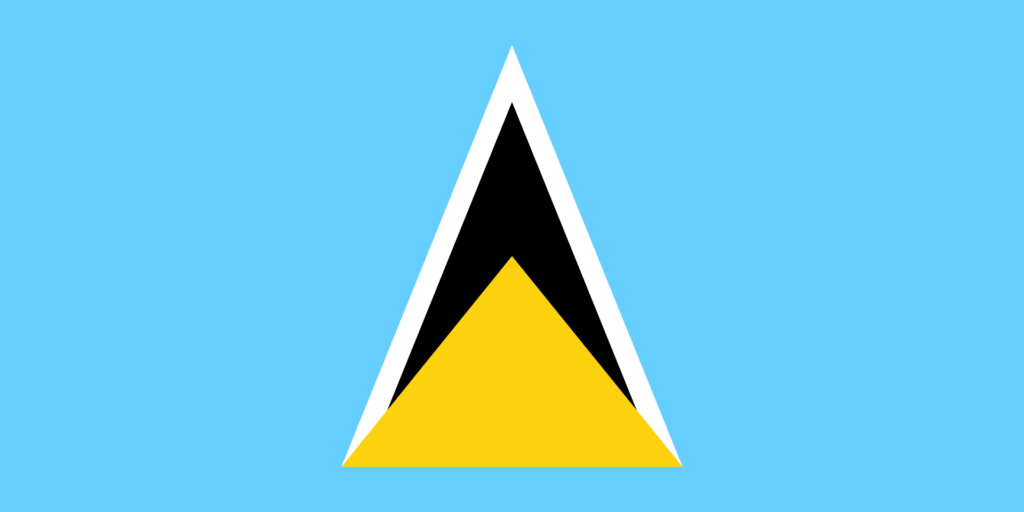
The flag of Saint Lucia features a blue field with a distinctive design at the center: a yellow isosceles triangle flanked by two black arrowhead-shaped triangles. This layout was conceived by native artist Dunstan St. Omer and officially adopted on March 1, 1967.
The design elements, particularly the triangles, are meant to evoke critical aspects of the nation, such as its iconic twin Pitons. The overall design successfully encapsulates the island nation’s geographical and cultural characteristics.
Saint Lucia Flag: Color Palette
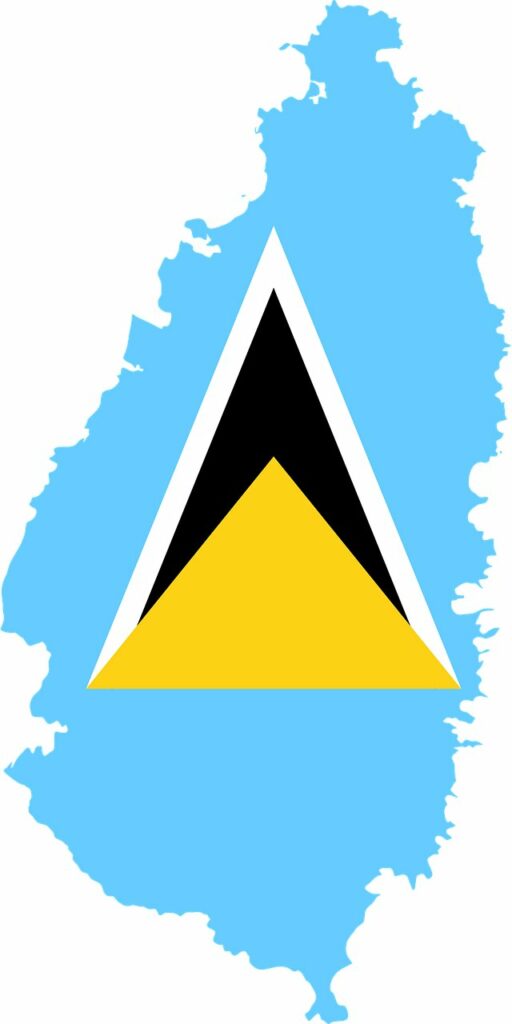
Saint Lucia Flag Emoji: 🇱🇨
Saint Lucia’s flag’s color palette is striking and thoughtfully chosen. Comprising blue, yellow, black, and white, these colors work harmoniously to create an instantly recognizable and emotionally resonant emblem.
The palette serves as a visual introduction to the deeper meanings and narratives each color will explore in the subsequent segment.
Meaning of Each Color

Blue
The shade of blue on the flag embodies the sky and sea surrounding Saint Lucia, capturing the essence of the Caribbean Sea and the Atlantic Ocean.
The blue color illustrates the island’s geographical setting and highlights its connections to the broader world through trade, exploration, and cultural exchanges that have historically occurred over the seas.
Yellow
The yellow triangle on the flag symbolizes the constant sunshine gracing the tropical island, vital in promoting the tourist industry.
The yellow can also represent prosperity, hinting at Saint Lucia’s bountiful natural resources and fertile lands, historically significant for agriculture.
Black
Contrary to a direct representation of African ancestry, the black triangles on the flag symbolize the topographic features known as the Pitons of Saint Lucia.
Although not an official interpretation, the black color could also culturally signify strength and resilience, resonating with the community’s spirit.
White
The white color on the flag, explicitly bordering the black arrowhead, symbolizes racial harmony and peaceful coexistence among the diverse communities residing on the island of Saint Lucia.
It reflects a sense of unity and mutual respect among the inhabitants, portraying a message of inclusivity and togetherness.
Saint Lucia Coat of Arms
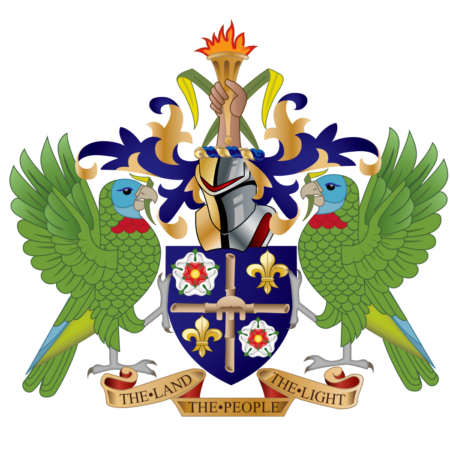
The coat of arms of Saint Lucia, introduced in 1967 and officially adopted in 1979, is a profound emblem that delves into the nation’s historical, cultural, and natural heritage.
The central element is a blue shield, crossed by two sticks of bamboo and surmounted by an African stool of authority. This design encapsulates both the indigenous and colonial influences on the island. A Rose and a Fleur-de-lis are depicted on the shield, symbolizing the historical ties to England and France.
The various elements within the coat of arms reflect Saint Lucia’s past, present, and future. From its colonial history under English and French rule to its unique natural features, the emblem provides a comprehensive narrative of the nation’s legacy and aspirations.
Historical Evolution and the Meaning Behind Changes
The flag of Saint Lucia has seen several incarnations before settling into its current design. Initially influenced by the European powers that colonized the island, the earliest versions featured symbols and colors highlighting the colonial heritage.
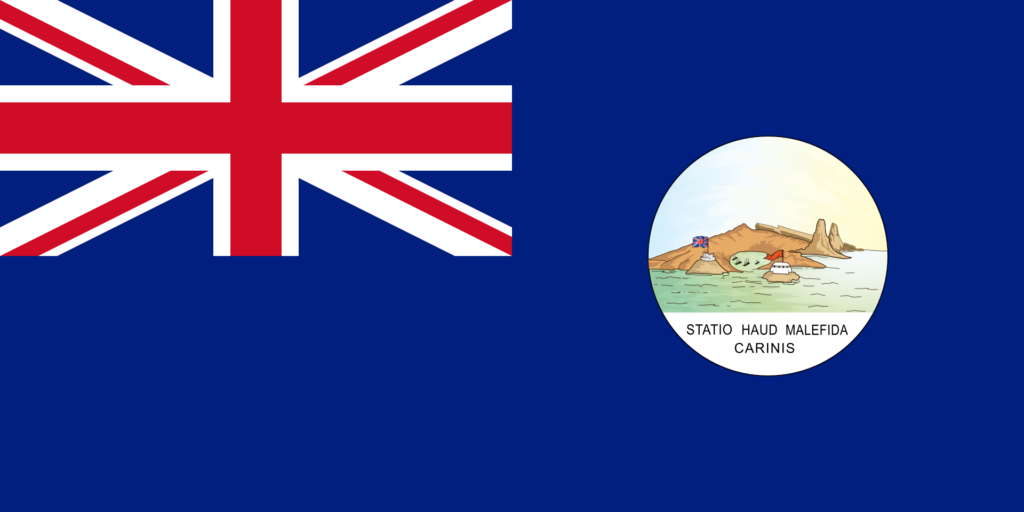
As the winds of change blew across the Caribbean, Saint Lucia, too, felt the call for independence and the need to establish a distinct individuality. This sentiment led to discussions around redesigning the flag to represent the nation’s evolving identity better.
During the late 20th century, the flag underwent its most significant transformation. The chosen design sought to move away from the colonial past and emphasize Saint Lucia’s cultural and natural attributes.
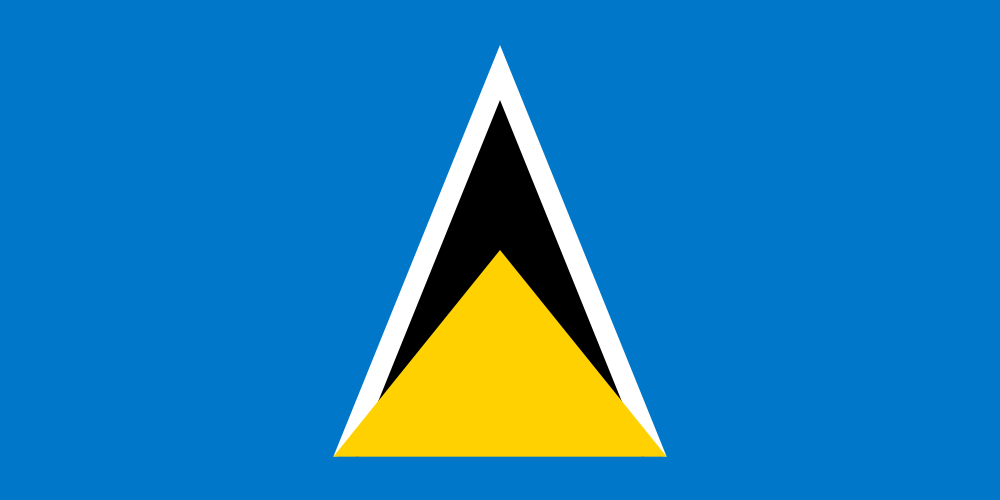
Over the years, the introduction, removal, or alteration of certain symbols and colors mirrored the nation’s political, cultural, and social shifts.
Throughout its history, each modification to the flag served as a testament to the island’s journey: from a colonial outpost to a nation standing proudly with its own identity amidst the global community.
Overall Symbolic Meaning of the Flag
The flag of Saint Lucia seamlessly intertwines its nation’s stories, hopes, and values. The encompassing blue mirrors the vast sky and the Caribbean Sea, highlighting the country’s natural allure.
The harmonizing black and white reflects its diverse heritage, while the golden triangle signals prosperity and optimism. Together, the colors craft a unified narrative of Saint Lucia’s pride, resilience, and vibrant cultural mosaic.
Similar Flags to the Flag of Saint Lucia
Inspired by the Caribbean’s rich tapestry of cultures and histories, several flags echo elements reminiscent of Saint Lucia’s vibrant design. Let’s delve into a few that share striking similarities.
Bahamas
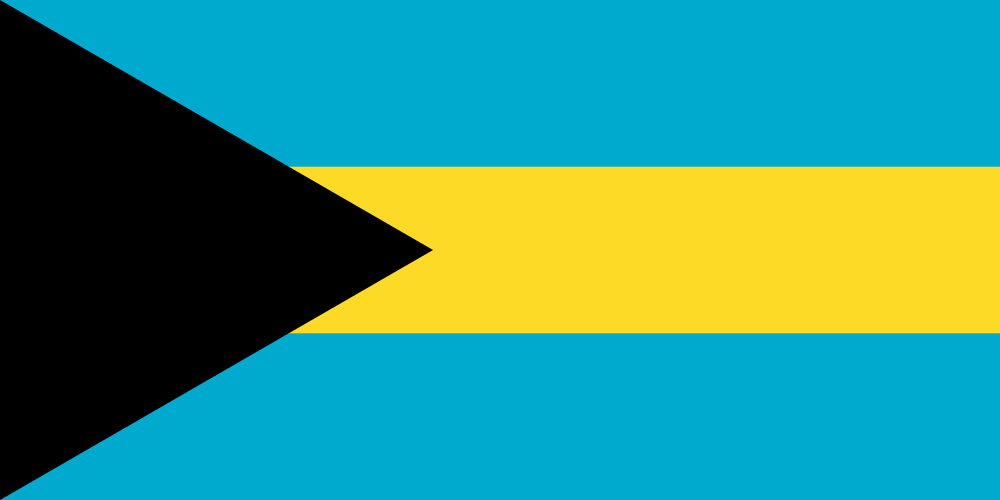
Both flags predominantly showcase blue, reflecting the Caribbean Sea. While Saint Lucia’s design focuses on a central triangle, the Bahamas uses stripes, but both effectively highlight their island’s natural beauty and geography.
The stripes in the Bahamas’ flag can be reminiscent of Saint Lucia’s mountainous topography, seen as layers or terrains. The sunny yellow stripe in the Bahamas’ flag aligns with the bright and tropical ambiance, akin to what’s felt in Saint Lucia.
Saint Vincent and the Grenadines
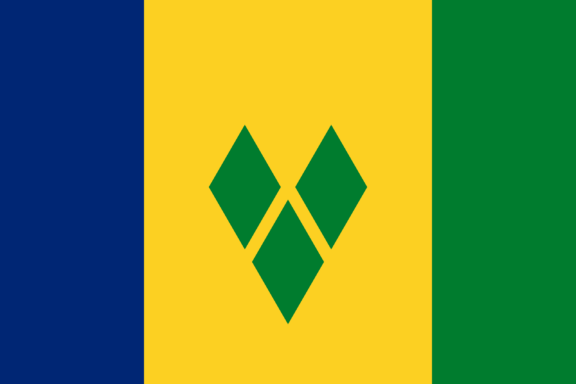
St. Vincent and the Grenadines flag, similar to the flag of Saint Lucia, uses blue to evoke the Caribbean’s sea and sky. While Saint Lucia features a central triangle, Saint Vincent has a trio of diamonds, hinting at a shared emphasis on unique island features.
Additionally, the bright colors in both flags capture their respective islands’ vibrant culture and warmth. The diamonds on Saint Vincent’s banner, just like Saint Lucia’s triangle, both play pivotal roles in expressing the island’s uniqueness.
Read more about the flag of Saint Vincent and the Grenadines.
Antigua and Barbuda
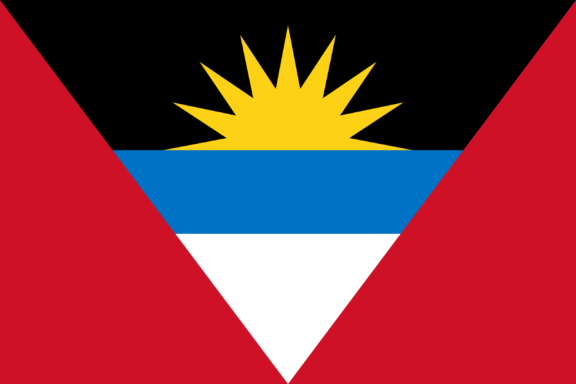
The flags of both Antigua and Barbuda and Saint Lucia incorporate blue, symbolizing the Caribbean. The significant similarity is their design’s ‘V’ or inverted triangle shape, representing different elements but showcasing a shared geometrical motif.
Antigua and Barbuda’s flag also employs the sun, complementing the radiant and sunny disposition shared across these Caribbean islands. The black on Antigua’s flag resonates with the black of Saint Lucia’s, signifying the people and their strength.
Read more about the flag of Antigua and Barbuda.
Conclusion
Saint Lucia’s flag stands as a powerful emblem, weaving together diverse strands of significance to form a tapestry that resonates with its history and people. For the citizens of Saint Lucia, their flag isn’t just a piece of cloth; it’s a symbol of their identity, representing the land they cherish and the future they envision.
Image Sources and Copyright Information
- Waving Flags Against Sky: © BUTENKOV ALEKSEI/Shutterstock